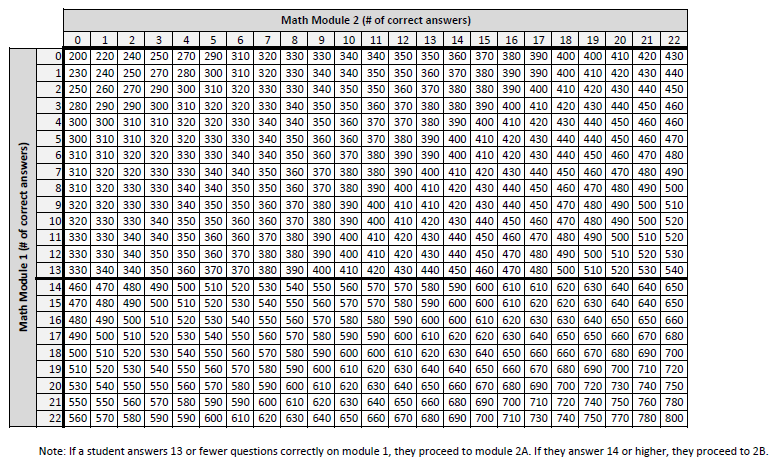Have you heard that the SAT is going digital? The SAT is making the switch in the spring of 2024, while students everywhere already experienced a Digital PSAT earlier this month. Many parents and students have questions about what this transition means for their test preparation and what they can expect to see on the test. These questions also seem to be heavily directed at the math section of the test, given its many students’ most challenging subject. In this article, we will be discussing the several ways in which the SAT will change with the switch to digital, and what that means for test-takers.
1. The Format
Apart from the obvious switch to digital (and being fashionably late to the 21st century by a couple decades), the College Board has also changed the SAT’s format and duration.
| Reading & Writing | Module 1 | 27 Questions | 32 Minutes |
| Reading & Writing | Module 2 | 27 Questions | 32 Minutes |
| Break | 10 Minutes | ||
| Math | Module 1 | 22 Questions | 35 Minutes |
| Math | Module 2 | 22 Questions | 35 Minutes |
As shown above, Reading and Writing have been grouped together into one section, and the No Calculator Math section has been done away with. The test itself is also considerably shorter, with Reading and Writing consisting of 54 questions and Math 44 questions, compared to the previous 96 and 58 questions, respectively. As a result, the SAT has been shortened from 3 hours and 15 minutes to 2 hours and 24 minutes (hooray!).
You’ve likely also noticed in the above figure that each section is broken up into 2 modules. This is because the digital SAT, unlike her paper predecessor, is an adaptive test. This means that the first module is scored and the difficulty of the second module given to the test-taker will depend on their performance on the previous one. In short, students who do well on module 1 will receive more challenging content on module 2. Ultimately, this adaptive testing model does factor into how tests are scored.
2. Scoring
With the digital SAT being adaptive, the scoring is as well. Test-takers who take the more challenging module 2 can get higher scores. For the Math section, a test-taker will need to answer 14 or more questions on the first module correctly in order to be assigned the more advanced second module.

Above is an example of a grade scale for the Math section. The horizontal black line represents the cutoff module 1 scores for module 2 placement. Passing that threshold of 14 correct answers on module 1 increases a test-taker’s potential score by up to 150 points. Meeting that module 2 placement threshold is the single most important objective for this test.
Additionally, there is no guessing penalty on the digital SAT. Combined with the strict adaptive placement cutoff, test-takers should answer a question even if they are not completely confident with their answer.
3. SAT Math Content
While the Math section of the SAT has been shortened substantially, the content remains very similar to the paper test. The test still covers all content up to and including Algebra 2 and is a mix of multiple choice and free response questions.
In addition to the math section of the SAT being made shorter, students also have a little more time per question (about 8 seconds when compared to the previous calculator section). This means that testing fatigue is likely to be less of an issue, and the test is more accommodating to slower test-takers, albeit minimally.

One of the most fundamental changes to the math section is the in-app graphing calculator. This addition provides all students with the same calculator with the same user-friendly interface, which appears to be an embedded Desmos program. Nearly all of my Algebra and Geometry students are well-rehearsed with Desmos, since it is often included in their curriculum.
Takeaways
The test is shorter, which is great. College Board’s digital testing app has a built-in graphing calculator and timer, which is great. The math content itself has changed little, making the existing test-taking techniques just as effective as ever… which is, wait for it… GREAT!
The most significant change is the change in priority. There is no guessing penalty, and placing in the adaptive testing model makes a difference of up to 150 points per section. The test-taker’s priority will be shifting away from answering under complete certainty to the art of educated guessing. And It’s not my place to say whether or not that is objectively good; I’ll leave that up to the students sitting for this test.
Ready to take preparation for the DSAT that is on the horizon? Great! Reach out to a Director today to craft a plan that will work for your student!

